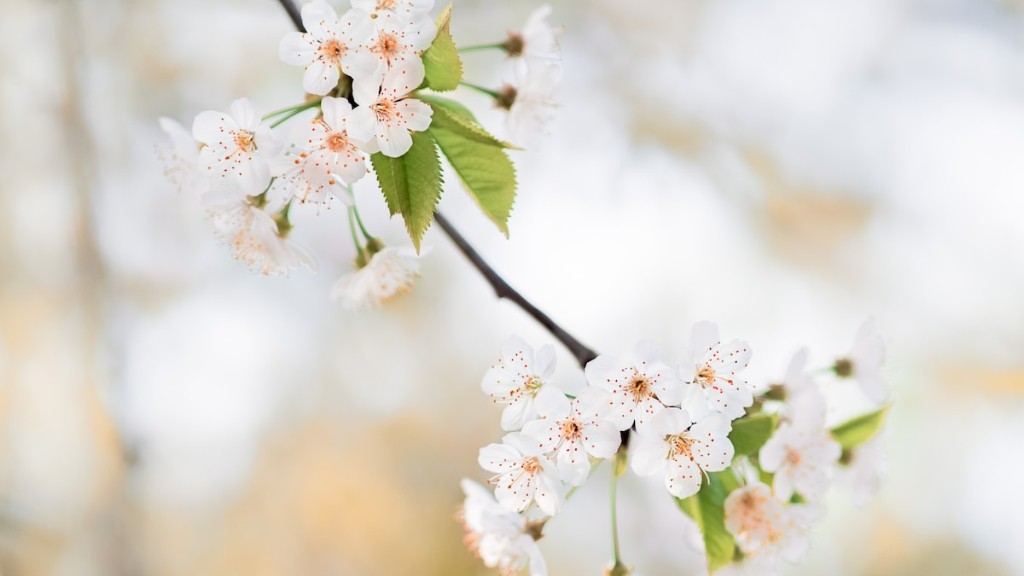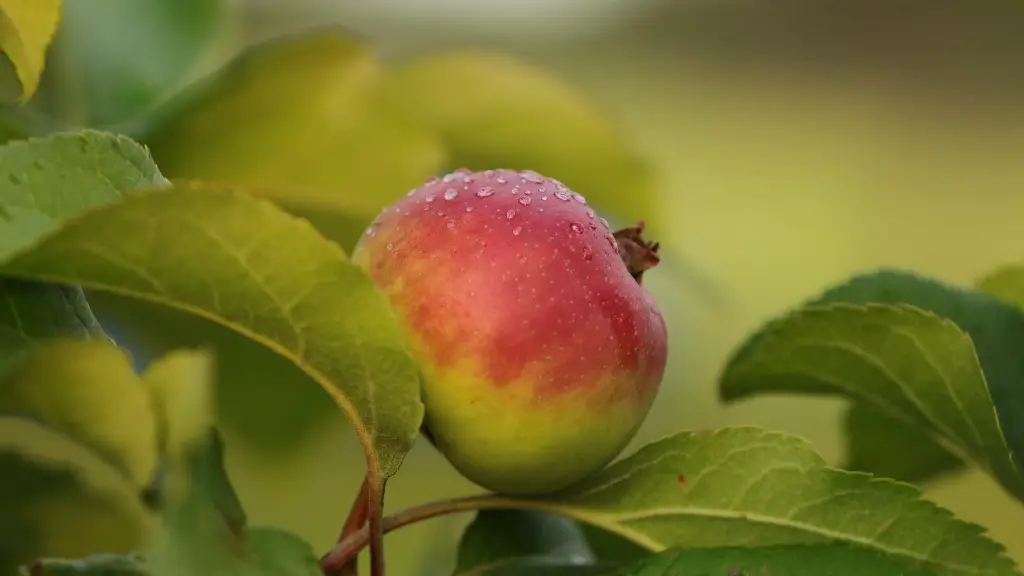A wild cherry tree may be a bit of a misnomer as they are present virtually everywhere in the world and are often considered both native and invasive. Wild cherry trees, (Prunus avium) are a species of cherry that are widely cultivated and easily identifiable due to their characteristic fruit. They are also known by other popular names like sweet cherries, wild bird cherries and gean. The tree itself is deciduous, meaning it loses its leaves annually, and reaches heights of 30 to 60 ft. with diameter reaching 20 to 30 inches.
Wild cherry tree bark is initially grey-brown, often with horizontal or vertical stripes. As the tree ages, the bark takes on a darker appearance with crevices where fungus and lichens grow, which is characteristic of the tree. The bark is also very aromatic when bruised. These trees like full sun and moist, but well-drained soils. They can grow in many different types of soil, but prefers neutral to alkaline soils. These trees will tolerate cold climates very well and are able to withstand temperatures down to -20C.
The main attraction of the wild cherry tree is the edible fruit that it bears in the May and June months. The fruit is dark red in color, often with a black bloom, which contains small petals that are edible. The fruit has a creamy, sweet-tart taste. Wild cherry trees also provide beautiful clusters of white flowers in the spring. The flowers are very fragrant and attract butterflies and other pollinators. In fall, the trees display dark red leaves that add great color to any landscape.
Wild cherry trees serve an important purpose in the ecosystem. They provide nectar, food and shelter to numerous species of animals, ranging from birds, bees and butterflies to squirrels, raccoons and chipmunks. Wild cherry tree wood is also a valuable resource for woodworkers who use it to make furniture, cabinetry, floors and more. The wood is relatively soft and easy to work with, making it an excellent choice for woodworking projects.
Wild cherry trees are often considered both native and invasive, so it’s important to understand their ecology before planting them. In some areas, local wildlife may be relying on wild cherry trees for food and habitat, so it’s important to take this into consideration when planting. It is also important to be mindful of the tree’s height and spread, as it will likely reach heights over 30 ft., and can spread to a width of up to 30 ft. as well.
Uses of Wild Cherry Tree
Wild cherry trees have a number of different uses. In addition to providing food and shelter to wildlife, they also offer a number of potential uses to humans as well. Their wood is popular for use in furniture, cabinetry, and flooring. Their leaves can be used to make tea, and their bark can be powdered and used as a nutrient-rich food additive. The fruit can be eaten directly, used to make jams, or fermented and distilled into liqueurs.
The trees’ sweet scent has also been used for centuries in perfumery, to make incense and for medicinal purposes. The trees can also be utilized for environmental cleanup, as their root systems are efficient at filtering out pollutants from the soil. And finally, the trees can be planted as part of a larger ecosystem or landscape to provide food and habitat to local wildlife.
Cultivation of Wild Cherry Tree
Cultivating wild cherry trees successfully requires accurate site selection, a good amount of patience, and most importantly, picked growing conditions. If these trees are planted in too much shade or in poorly-draining soils, they may not bear fruit. Wild cherry trees are self-fertile, so they require pollination partners in order to bear fruit. They are also susceptible to several diseases, including bacterial canker, brown rot, and sooty mold, among others. Regular pruning should be done to ensure proper air circulation and to keep them at the desired shape.
Wild cherry tree cultivation requires some effort and knowledge, but if successful, the rewards are plenty. When cared for properly, these trees can provide an abundant harvest of sweet fruit, beautiful flowers in the spring, vibrant leaves in the fall, and most importantly, a habitat for local wildlife.
Harvesting and Storage of Wild Cherry Tree
Once the fruit is ripe in May and June, it’s time for harvesting. Wild cherries will usually easily detach from the tree when ripe, but it is best to use gloves and long sleeves when picking to avoid staining the fruit. Fresh cherries should be eaten or stored soon after picking, because they can quickly ferment and spoil. Fresh cherries can be refrigerated for up to 5 days, or frozen for up to a year.
Dried cherries can be stored in an air-tight container for up to a year, and can be either sold as is or used in a variety of dishes and recipes. In addition, wild cherries can also be processed into jam, juice, and liqueurs, which can also be stored for long periods of time.
Health Benefits of Wild Cherry Tree
Wild cherry trees have a number of different potential health benefits. Their leaves and bark can be made into tea, which is high in antioxidants and has antiseptic and antispasmodic properties. The leaves can be used to make a decoction or infusion to relieve digestive issues and improve respiratory health. The fruit is also high in fiber and contains vitamins A, C, E, and B-complex, as well as unique phytonutrients like anthocyanin, which provides antioxidant protection.
Eating wild cherries can support cardiovascular health, boost the immune system, and reduce inflammation. Their anti-inflammatory properties can help to reduce joint pain, improve skin health, and aid in the treatment of urinary tract infections. Studies have also found that the fruit can reduce the risk of certain types of cancer and has been associated with a lower risk of stroke.
Conclusion
Wild cherry trees are a species of cherry that are widely cultivated and easily identifiable due to their characteristic fruit. They offer a variety of potential uses, including providing habitat and food for local wildlife, woodworking, and making preserves, juice, and liqueurs. Wild cherry trees require specific growing conditions in order to produce fruit, and should be pruned regularly. They also have a number of potential health benefits, including antioxidant protection, improved cardiovascular health, and reduced inflammation.


